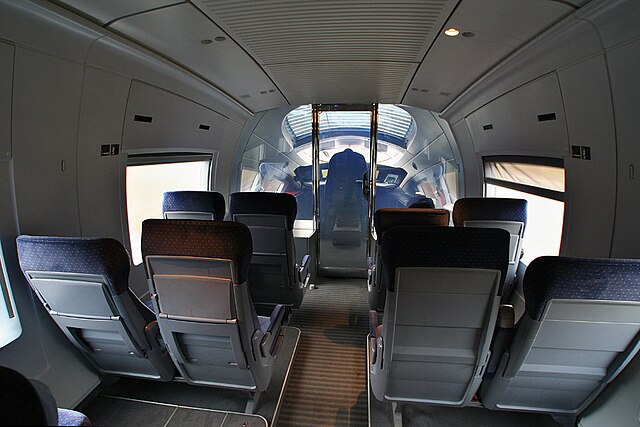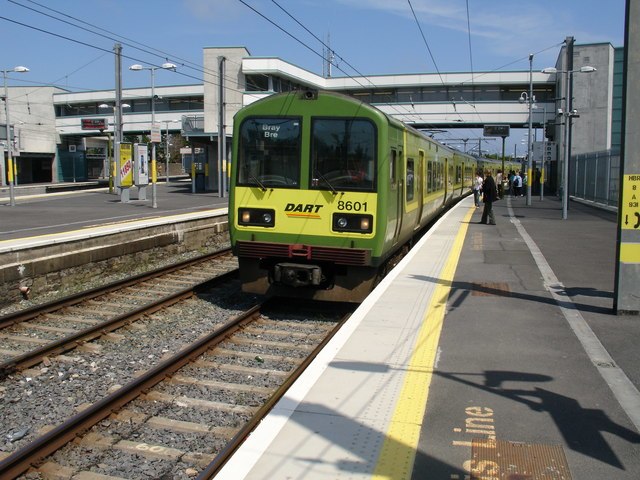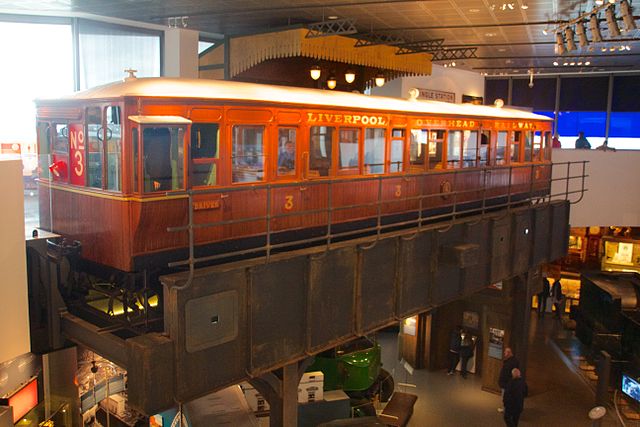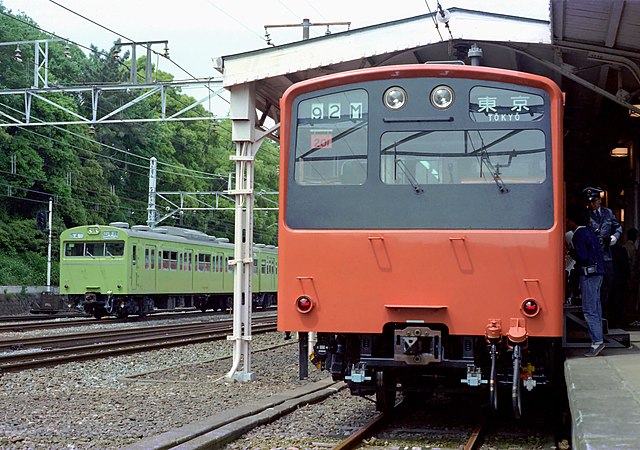ICE 3, also known as Intercity-Express 3, is a family of high-speed electric multiple unit trains operated by Deutsche Bahn. It includes classes 403, 406, 407 and 408, which are known as ICE 3, ICE 3M, New ICE 3 and ICE 3neo respectively. Three multisystem trains, known as ICE International, are owned by Nederlandse Spoorwegen. Based on the ICE 3M/F, Siemens developed its Siemens Velaro train family with versions used in Germany, Belgium, France, the United Kingdom, the Netherlands, Spain, China, Russia and Turkey. ICE 3 trains have a maximum speed of 320 km/h (200 mph) when travelling on the high-speed rail lines, however class 403 are permitted to go up to a maximum speed of 330 km/h (210 mph) when it travels on the high-speed route between Frankfurt and Cologne.
ICE 3 on the Cologne–Frankfurt high-speed rail line
Interior view showing smart glass separating driver's cab
NS logoed ICE 3 (Class 406) on the Cologne–Frankfurt high-speed rail line
A picture of a DB ICE 3 class 406 cab
An electric multiple unit or EMU is a multiple-unit train consisting of self-propelled carriages using electricity as the motive power. An EMU requires no separate locomotive, as electric traction motors are incorporated within one or a number of the carriages. An EMU is usually formed of two or more semi-permanently coupled carriages, but electrically powered single-unit railcars are also generally classed as EMUs. The great majority of EMUs are passenger trains, but versions also exist for carrying mail.
A DART 8500 class commuter EMU at Howth Junction railway station, Ireland.
A 6-car Siemens Nexas EMU arrives at Flinders Street station on the Upfield service in Melbourne, Australia.
A Liverpool Overhead Railway carriage in the Museum of Liverpool. The first EMUs in 1893.
The prototype unit of JNR 201 series on public display at Harajuku Station in Tokyo, 13 May 1979. Next to it, a Yamanote Line's 103 series train can be seen passing through








